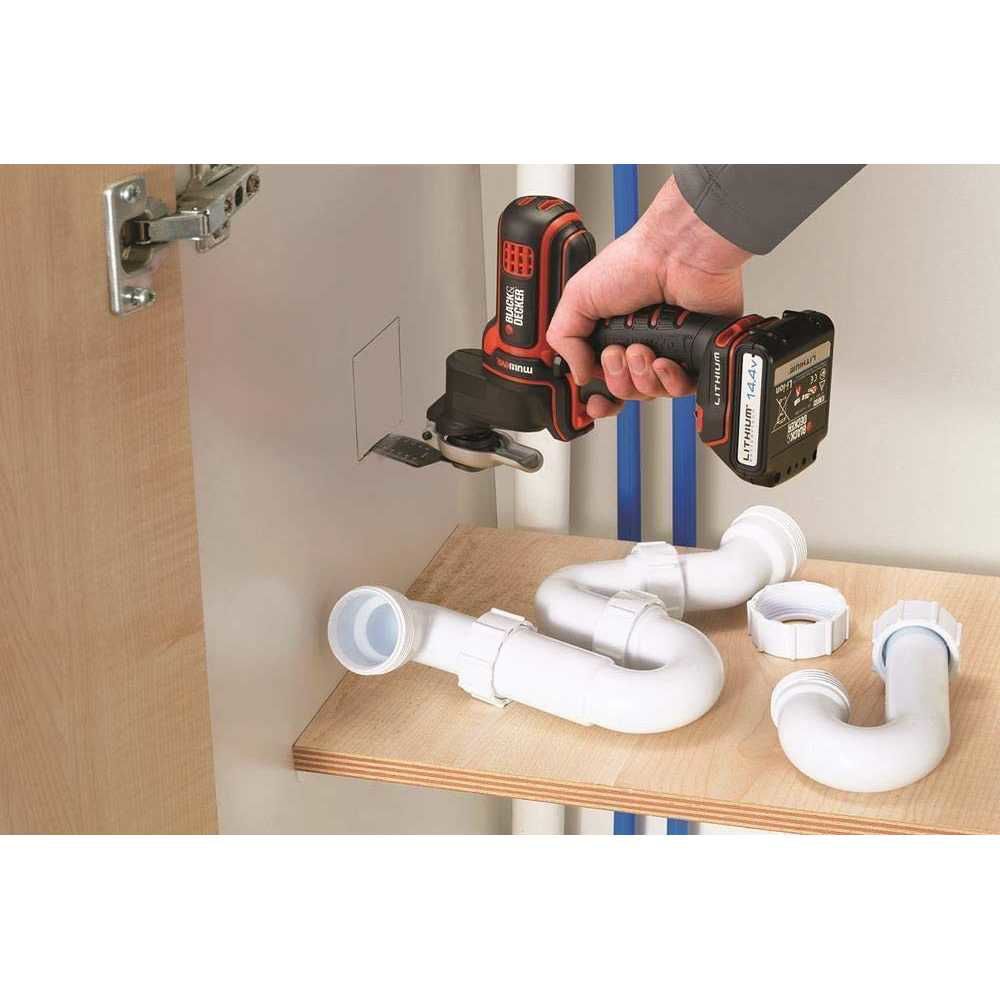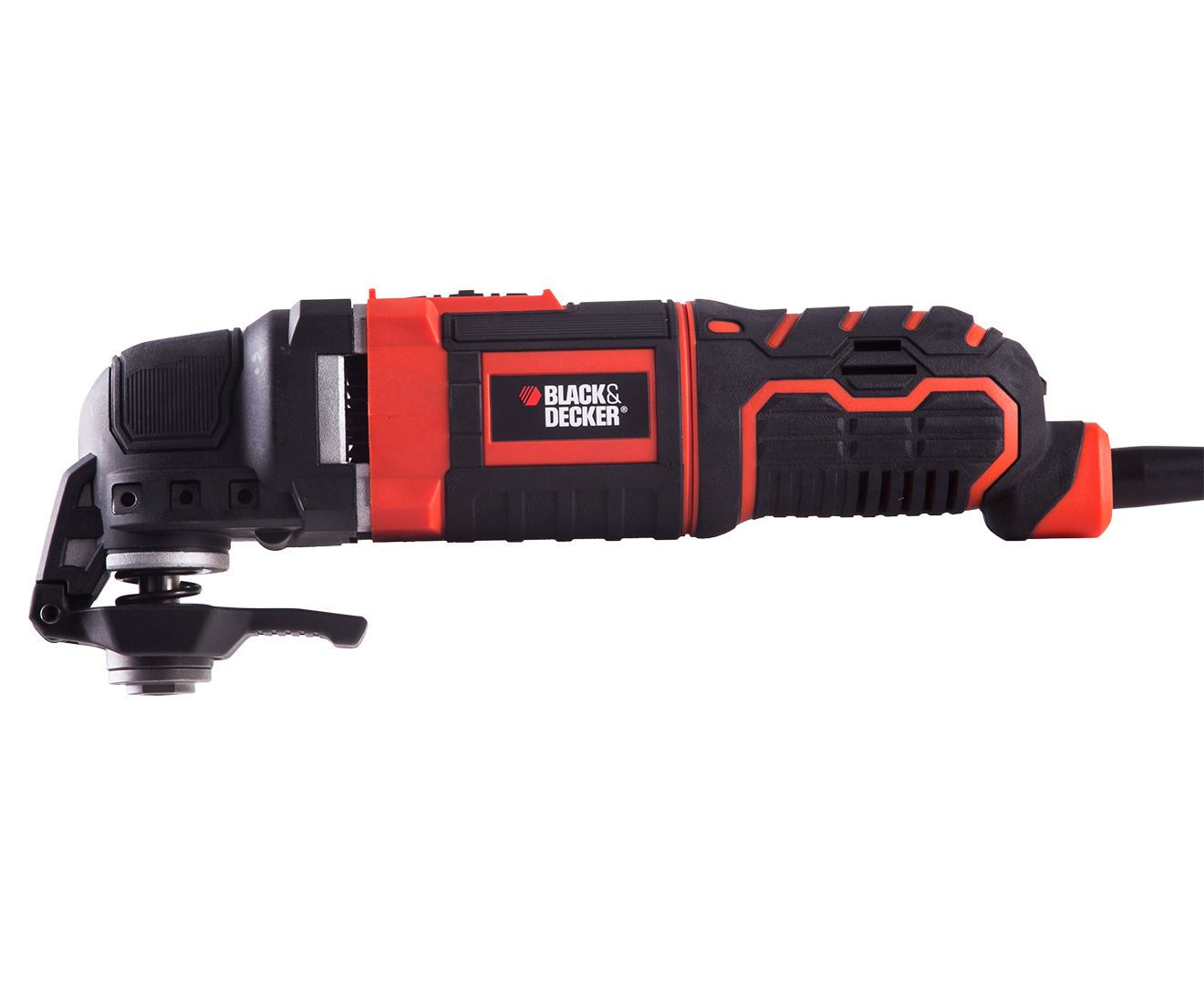
Sanding attachments work by holding onto sandpaper specifically made to fit onto them. Most oscillating tools come with a sanding attachment, but you can also buy one separately. A grout-removal blade is often edged with carbide or diamond dust both help blades remove grout without wearing down (though diamond is tougher than carbide, and therefore the blades that feature it are pricier). You can’t use these blades for much else, but they’re essential if you’re working on a large tiled area. Grout is hard and will burn through regular cutting blades.

If you’ve got a project that requires cutting lots of material of one type-say, wood trim or metal pipe for plumbing-your best bet is to buy blades made for one material or the other. Specific blades for wood or metal do best on those materials and last longest, too. But they won’t provide a cut that’s as quick and clean as one made with a specialty blade for only a single material type. If your tool doesn’t come with one, they’re worth purchasing because they can be used for most jobs around the house, like trimming molding or cutting plywood for an arts and crafts project. These handy blades can typically cut wood, metal, or some combination of the two (like wooden studs embedded with nails). But you’ll probably need to buy a few attachments separately. Most oscillating tools come with at least a handful of attachments to get you started, often including at least one sanding attachment and one general-purpose cutting blade. Many tools in our ratings can take all three types of StarLock blades.
BLACK AND DECKER OSCILLATING MULTI TOOL BLADES SAVINGS PLUS
The oscillating tools that are compatible with the Plus and Max also tend to be more mechanically advanced, so they’re able to attach to larger and more aggressive blades and attachments. All three StarLock systems are similar, but StarLockPlus and StarLockMax have more points of contact between the blade. But most models now use a mechanism called StarLock, StarLockPlus, or StarLockMax, all of which we recommend over the bolt attachments. That makes switching attachments a bit time-consuming, requiring you to loosen a bolt to remove a blade or tighten it to attach one. Some less expensive models use a bolt to secure attachments. Blades and attachments for oscillating tools attach in one of two ways. Buying tools in a kit almost always provides the lowest price per tool and the best value, provided you’ll use all of the tools in the kit and don’t already own any of them. Most kits are sold with three to seven tools and also often include a drill, a circular saw, two batteries, and a single charger. Oscillating tools are often included as part of a larger toolkit. You can use the battery and charger that came with your drill and save about 30 percent on the cost of the oscillating tool by buying it bare. (The same goes for electric lawn tools.) If you go cordless and you already own a cordless drill, consider buying an oscillating tool from the same brand. But you’ll typically pay a bit more for them, and of course you’ll need to periodically charge the battery. In contrast, cordless options can go anywhere, allowing you to work without access to an outlet. If you go with a corded model, look for one with a cord that’s at least 12 feet long to maximize reach.

Most models are cordless, but corded models offer plenty of power and they’re often a good value. Oscillating tools look and work similarly, but a handful of key differences can make certain models easier to use and more versatile, too. Most tools take grout-grinding attachments, which consist of a blade shaped like a half or quarter moon, specially designed to tackle the task. If you need to regrout a bathroom, a multi-tool is a godsend. Because of the triangular shape of the sandpaper and the attachment, they’re ideal for sanding in tight corners on a floor, as you’d do to sand wood or tile adhesive.

Most multi-tools have triangular sanding attachments designed to accept sandpaper of varying grits for different projects.

Those blades don’t make cuts in specific materials as well, but you can save money by buying a single multi-purpose blade for multiple projects. You’ll also see multi-purpose blades, designed for use on any of those materials. In a store, you’ll typically find blades for each of those specific tasks. A multi-tool can cut wood, metal, plaster, or drywall. Here are some of the most common jobs, and the attachments used for each. The real magic of an oscillating tool comes from the broad array of attachments it can use.


 0 kommentar(er)
0 kommentar(er)
